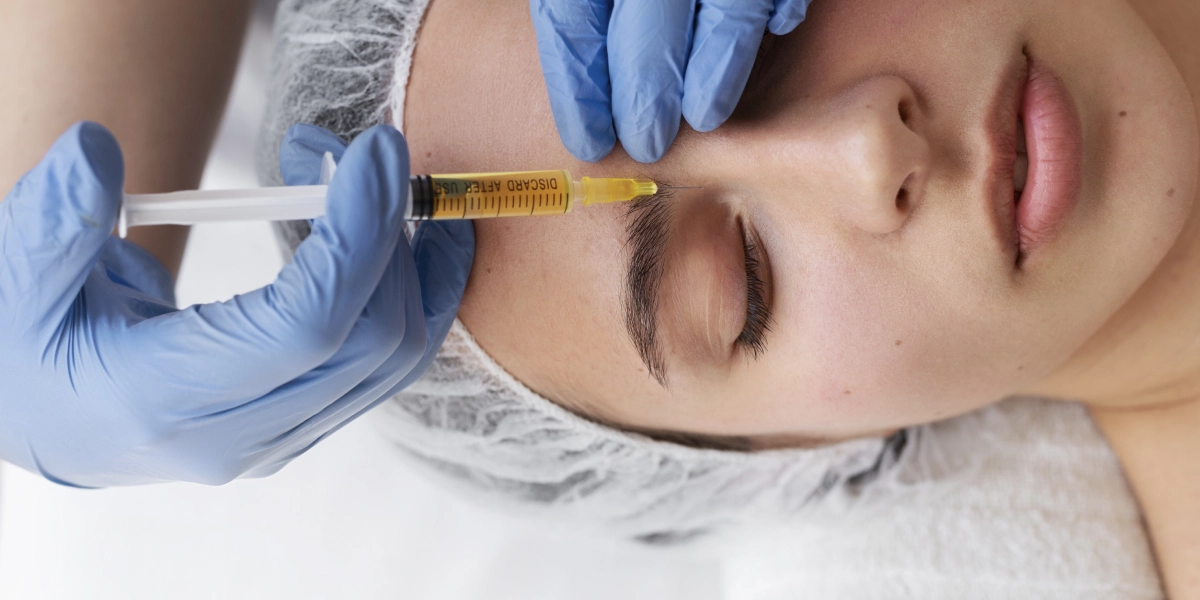After rigorous scientific research and development, Retatrutide has emerged as a novel pharmacological approach offering a wide array of potential benefits to the body.
Retatrutide has distinctive molecular properties and multifunctional attributes that have garnered enough attention lately and will be the next disruptive medicine for its clinical usage in endocrinology.
Retatrutide ((LY3437943), developed by Eli Lilly and Company, has a unique mechanism of action as it is marketed as a triple hormone receptor agonist. As a potent agonist of the glucose-dependent insulinotropic polypeptide, glucagon-like peptide 1, and glucagon receptors, Retatutide modulates multifaceted physiological pathways with maximum safety profile and efficacy.
In this comprehensive blog post, we delve into the intricacies of Retatrutide, unraveling its manifold benefits across a spectrum of physiological and pathological contexts.
From its pivotal role in modulating immune responses to its potential implications in metabolic regulation, Retatrutide promises to be one of the potential therapeutic approaches to treat metabolic disorders.
Metabolic Regulation:

Retatrutide plays a crucial role in metabolic regulation by targeting key pathways involved in glucose and lipid metabolism. It enhances insulin sensitivity by promoting glucose uptake in peripheral tissues and inhibiting hepatic gluconeogenesis.
Additionally, Retatrutide facilitates the utilization of fatty acids for energy production, thereby reducing lipid accumulation and improving lipid profiles. This leads to considerable body weight loss in individuals with high body mass index (BMI).
Evidence of significant body weight reduction was consistent with the results of a phase 2 clinical trial involving Retatrutide published in the New England Journal of Medicine (NEJM).
The randomly assigned, double-blind, placebo-controlled clinical trial involved most of the participants with a BMI of 30 or greater. This investigational molecule achieved up to 17.5% mean body weight reduction at 24 weeks in adults with obesity and overweight (1).
Its ability to modulate metabolic processes makes it a promising candidate for the management of conditions such as type 2 diabetes and metabolic syndrome (2).
Anti-inflammatory Properties:
Retatrutide exerts potent anti-inflammatory effects through multiple mechanisms. It inhibits the activation of nuclear factor-kappa B (NF-κB), a master regulator of inflammation, thereby reducing the expression of pro-inflammatory cytokines such as tumor necrosis factor-alpha (TNF-α) and interleukin-6 (IL-6).
Furthermore, Retatrutide enhances the production of anti-inflammatory mediators such as interleukin-10 (IL-10) and promotes the resolution of inflammation by facilitating the clearance of inflammatory cells (3).
These anti-inflammatory properties contribute to its efficacy in mitigating inflammatory conditions such as rheumatoid arthritis and inflammatory bowel disease.
Neuroprotective Effects:
Retatrutide exhibits neuroprotective effects through its ability to modulate neuronal survival and synaptic plasticity. It promotes the expression of neurotrophic factors such as brain-derived neurotrophic factor (BDNF), which support neuronal growth and function.
Additionally, Retatrutide attenuates neuroinflammation by suppressing the activation of microglia and astrocytes, thus preserving neuronal integrity.
The neuroprotective effects offered by Retartutide make it a potent treatment option for neurodegenerative disorders like Alzheimer’s disease and multiple sclerosis.
Wound Healing:

Retatrutide accelerates wound healing by promoting angiogenesis, collagen synthesis, and epithelialization. It stimulates the proliferation and migration of endothelial cells, leading to the formation of new blood vessels and improved tissue perfusion.
Moreover, Retatrutide enhances the deposition of extracellular matrix proteins such as collagen and fibronectin, which are essential for wound closure and tissue remodeling.
By enhancing these processes, Retatrutide accelerates the healing of acute and chronic wounds, including diabetic ulcers and pressure sores.
Cardioprotective Effects:
Retatrutide exerts cardioprotective effects by modulating various aspects of cardiac function and vascular health. It reduces myocardial oxidative stress and inflammation, thereby preserving myocardial contractility and preventing adverse cardiac remodeling (3).
Additionally, Retatrutide improves endothelial function by enhancing nitric oxide (NO) bioavailability and suppressing endothelial dysfunction.
These cardioprotective properties make Retatrutide a promising therapeutic agent for preventing and managing cardiovascular disease such as heart attack, heart failure, and atherosclerosis-associated events such as stroke.
Anti-aging Properties:

Retatrutide counteracts cellular aging processes by mitigating oxidative stress, DNA damage, and cellular senescence. It enhances antioxidant defenses by upregulating the expression of antioxidant enzymes such as superoxide dismutase (SOD) and catalase.
Additionally, Retatrutide promotes DNA repair mechanisms and inhibits the accumulation of senescent cells, thereby delaying age-related functional decline.
These anti-aging properties contribute to Retatrutide’s potential to extend a healthy lifespan and improve the overall quality of life in aging populations.
Immunomodulatory Effects:
Retatrutide modulates immune responses by regulating the activity of immune cells and cytokine production. It enhances innate immune surveillance by promoting phagocytosis and antigen presentation, leading to improved pathogen clearance.
Moreover, Retatrutide modulates adaptive immune responses by regulating T cell activation and differentiation, thus maintaining immune tolerance and preventing autoimmunity.
These immunomodulatory effects make Retatrutide a promising treatment agent for autoimmune diseases, infectious diseases, and immune-mediated conditions such as allergies and asthma.
Muscle Growth and Repair:
Retatrutide stimulates muscle growth and repair by activating satellite cells, which are responsible for muscle regeneration. It promotes the proliferation and differentiation of satellite cells into mature myofibers, leading to increased muscle mass and strength.
Additionally, Retatrutide enhances protein synthesis and inhibits protein degradation, thereby promoting muscle hypertrophy and reducing muscle wasting.
These anabolic effects make Retatrutide a valuable tool for athletes seeking to enhance muscle recovery, performance, and adaptation to training.
While Retatrutide is not available in the market yet for public usage, it is worth mentioning that this triple agonist is currently undergoing the phase 3 trial for obesity and is already progressing towards massively positive results, and will soon be FDA-approved if the trials continue to show effects in overweight individuals. Let’s wait before it disrupts the market for obesity medicine!
References:
- Jastreboff AM, Kaplan LM, Frías JP, et al. Triple-Hormone-Receptor Agonist Retatrutide for Obesity – A Phase 2 Trial. N Engl J Med. 2023;389(6):514-526. doi:10.1056/NEJMoa2301972
- Urva, S., Coskun, T., Loh, M. T., Du, Y., Thomas, M. K., Gurbuz, S., Haupt, A., Benson, C. T., Hernandez-Illas, M., D’Alessio, D. A., & Milicevic, Z. (2022). LY3437943, a novel triple GIP, GLP-1, and glucagon receptor agonist in people with type 2 diabetes: a phase 1b, multicentre, double-blind, placebo-controlled, randomised, multiple-ascending dose trial. Lancet (London, England), 400(10366), 1869–1881.
- Myasoedova VA, Bozzi M, Valerio V, et al. Anti-Inflammation and Anti-Oxidation: The Key to Unlocking the Cardiovascular Potential of SGLT2 Inhibitors and GLP1 Receptor Agonists. Antioxidants (Basel). 2023;13(1):16. Published 2023 Dec 20. doi:10.3390/antiox13010016


